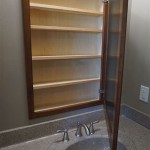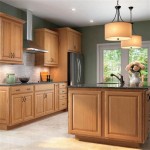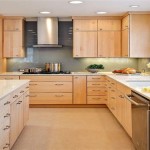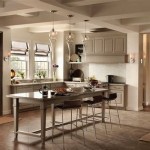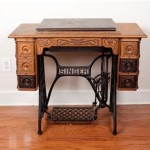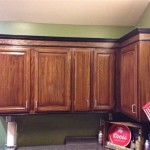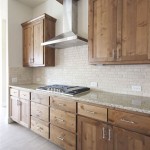Do I Have To Prime Kitchen Cabinets Before Painting? A Comprehensive Guide
The question of whether to prime kitchen cabinets before painting is a common one for homeowners undertaking a cabinet refinishing project. While skipping the priming step might seem like a way to save time and money, understanding the purpose of primer and its potential benefits is crucial for achieving a professional and long-lasting finish. This article will explore the function of primer, the factors that influence the decision to prime, and the consequences of neglecting this important step.
Priming is the application of a preparatory coat to a surface before painting. Primer serves several key functions: it improves paint adhesion, seals porous surfaces, blocks stains, and provides a uniform base for the topcoat. When applied to kitchen cabinets, primer can significantly impact the durability and appearance of the finished paint job.
Enhancing Paint Adhesion and Durability
One of the primary reasons to prime kitchen cabinets is to enhance paint adhesion. Many cabinet surfaces, especially those made of melamine, laminate, or even previously painted wood, can be slick and non-porous. Paint struggles to bond effectively with such surfaces, leading to chipping, peeling, and cracking over time. Primer acts as an intermediary layer, creating a textured surface to which the paint can firmly adhere.
The increased adhesion provided by primer translates directly to improved durability. Kitchen cabinets are subjected to frequent use, cleaning, and exposure to moisture and grease. Without proper adhesion, the paint film is vulnerable to damage from these factors. A primed surface provides a more robust and resilient base, extending the lifespan of the paint job and reducing the need for frequent touch-ups or repainting.
Furthermore, some specialty primers are formulated specifically for difficult-to-adhere-to surfaces. These primers often contain bonding agents that create a chemical link between the existing surface and the paint. Using the appropriate primer for the cabinet material is essential for maximizing adhesion and achieving a durable finish.
Even if cabinets are made of wood, primer still plays a crucial role. Wood, especially older wood, can be absorbent and uneven in texture. Primer helps to create a uniform surface, preventing the paint from soaking into some areas more than others. This evens out the sheen and color of the paint, resulting in a more professional-looking finish.
When choosing a primer, consider the type of paint you will be using as a topcoat. Some primers are specifically designed to work best with latex paints, while others are better suited for oil-based paints. Using a compatible primer and paint system will optimize adhesion and prevent compatibility issues.
Sealing Porous Surfaces and Blocking Stains
Kitchen cabinets are often exposed to spills, splatters, and grease buildup over time. These substances can penetrate porous surfaces, leaving behind stains that are difficult to remove. In addition, wood cabinets can naturally contain tannins, which are compounds that can leach through paint and cause discoloration. Primer acts as a sealant, preventing these stains from bleeding through and affecting the finished appearance of the paint.
For cabinets with existing stains, a stain-blocking primer is essential. These primers are formulated with ingredients that encapsulate the stain molecules, preventing them from migrating to the surface. Without a stain-blocking primer, the stain may bleed through the fresh coat of paint, requiring multiple coats and potentially affecting the color accuracy of the topcoat.
Even if the cabinets appear to be clean and stain-free, a primer can still provide a valuable barrier. Primer helps to seal the pores of the cabinet material, preventing moisture, grease, and other contaminants from penetrating and potentially damaging the paint film. This is especially important in areas prone to high humidity or frequent spills.
When applying primer to porous surfaces, it is often necessary to apply multiple coats to ensure adequate sealing. The first coat of primer will likely be absorbed quickly by the surface, leaving some areas still exposed. A second coat will provide a more complete barrier, ensuring that the paint film is protected from underlying staining or contamination.
The type of primer selected should be appropriate for the specific type of stain being blocked. For example, oil-based primers are generally more effective at blocking severe water stains and tannin bleed, while some newer water-based primers offer comparable performance for lighter staining. Consult with a paint professional to determine the best primer for your specific needs.
Creating a Uniform Base for the Topcoat
Kitchen cabinets can have variations in surface texture and color, especially if they have been previously painted or stained. These inconsistencies can affect the way the topcoat of paint appears, leading to uneven color, sheen, and texture. Primer helps to create a uniform base, ensuring that the paint is applied evenly and smoothly across the entire surface.
Primer can also help to fill in minor imperfections, such as hairline cracks or small dents. While primer is not a substitute for proper surface preparation, it can help to minimize the appearance of these blemishes and create a smoother overall finish. This is especially beneficial for older cabinets that may have accumulated some wear and tear over time.
By providing a uniform surface, primer also allows the paint to achieve its true color and sheen. Variations in the underlying surface can cause the paint to appear different in different areas, resulting in an inconsistent and unprofessional-looking finish. Primer eliminates these variations, ensuring that the paint color is accurate and consistent across the entire cabinet surface.
When applying primer, it is important to use smooth and even strokes to avoid creating any additional texture. A high-quality brush or roller will help to achieve a uniform application and minimize the appearance of brushstrokes or roller marks. Sanding the primer after it has dried can further smooth the surface and create an even better base for the topcoat.
Certain tinted primers can be used to more closely match the final paint color, which can help to achieve better coverage with fewer coats of paint. This is especially helpful with bold or dark colors that may require multiple coats to achieve full opacity. By tinting the primer to a similar shade, you can reduce the amount of paint needed and save time and money.
In summary, the decision to prime kitchen cabinets before painting should be carefully considered. While there may be situations where priming is not strictly necessary, the benefits of priming in terms of adhesion, stain blocking, and uniformity are generally well worth the effort. By taking the time to properly prime your cabinets, you can achieve a more durable, professional-looking finish that will last for years to come. The specific type of primer chosen should be appropriate for the cabinet material, the type of paint being used, and the potential for staining or other surface imperfections. Consulting with a paint professional can provide valuable guidance in selecting the right primer and ensuring that the project is completed successfully.
Proper surface preparation is always crucial, regardless of whether primer is used. This includes cleaning the cabinets thoroughly to remove dirt, grease, and other contaminants. Sanding the cabinets to create a slightly rough surface will also improve adhesion, even if primer is applied. Repairing any damage, such as cracks or dents, is also essential for achieving a smooth and professional-looking finish.
Consider the long-term benefits of priming versus the short-term savings of skipping this step. While priming may add some time and expense to the project, it can significantly extend the lifespan of the paint job and reduce the need for future touch-ups or repainting. In the long run, priming can actually save you time and money by preventing premature paint failure.

How To Paint Kitchen Cabinets A Step By Guide Confessions Of Serial Do It Yourselfer

Refinish Kitchen Cabinets With Kilz Restoration Primer

What You Need To Know Before Painting Cabinets The Palette Muse

How To Prime Cabinets For A Smooth Finish The Turquoise Home

Tips Tricks For Painting Oak Cabinets Evolution Of Style

Do I Need A Primer For Kitchen Cabinets 518 Painters

Painting Kitchen Cabinets Without Primer

How To Paint Kitchen Cabinets A Step By Guide Confessions Of Serial Do It Yourselfer

How To Paint Kitchen Cabinets Without Sanding Or Priming

How To Prime Cabinets For A Smooth Finish The Turquoise Home
Related Posts

